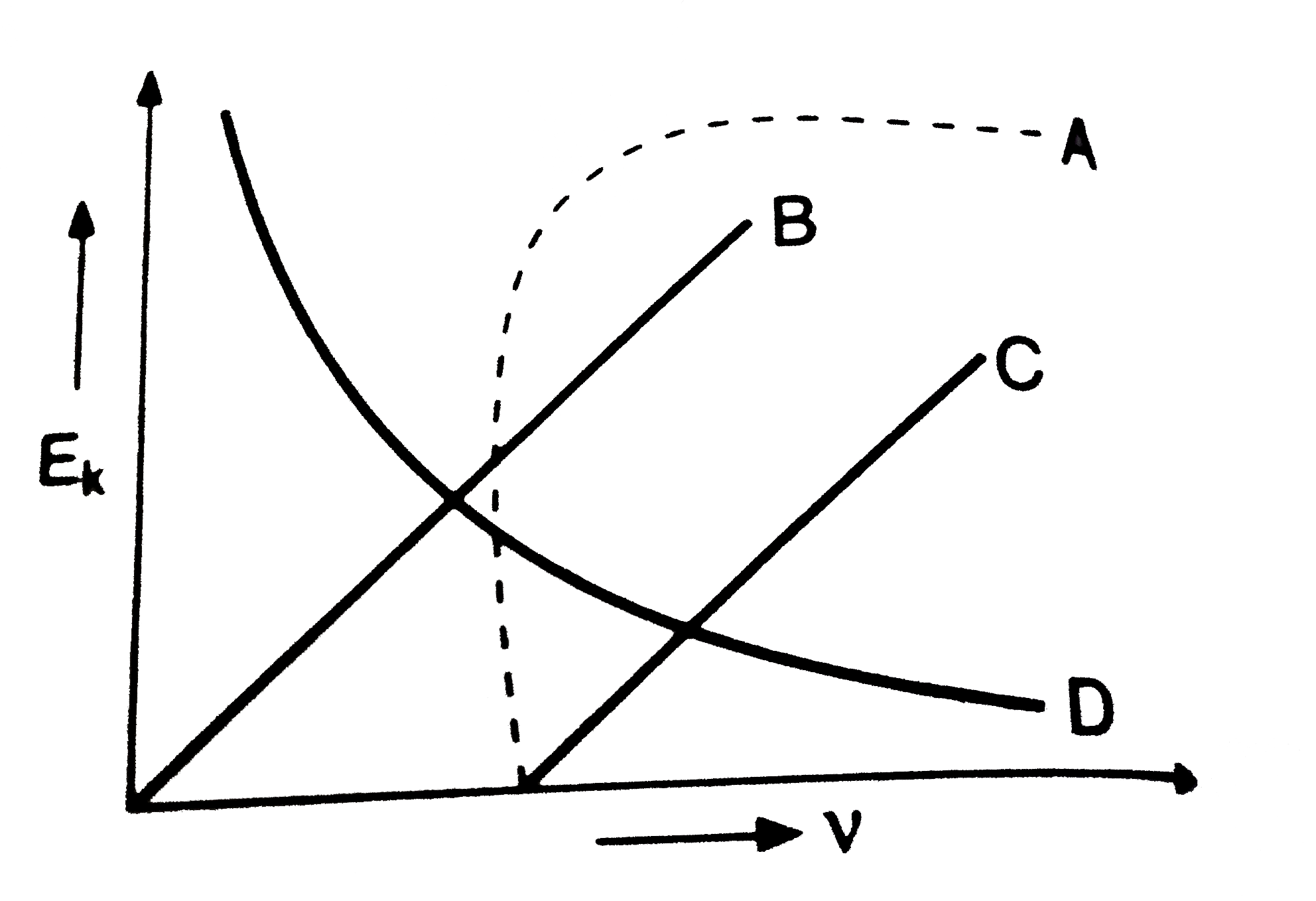Statement - 1 : When ultraviolet light is incident on a photocell , its stopping potential is V0 and the maximum kinetic energy of the photoelectrons is Kmax when the ultraviolet light is replaces by X- rays both V0andKmaxincrease
Statement - 2 : Photoelectrons are emitted with speeds ranging from zero to a maximum value became of the range of frequencies present in the incident light
Statement-1 is true, Statement-2 is true and Statement-2 is correct explanation of Statement-1.
Statement-1 is true, Statement-2 is true, but Statement-2 is not a correct explanation of Statement-1.
Statement-1 is true, but Statement-2 is false
Statement-1 is false, but Statement-2 is true.
The correct Answer is:c
eV0=Kmax=hcλ−ϕ0
When λ decreases, then both V0 and Kmax will increases. As λX−ray<λultraviolet, so V0 and Kmax will be more for X-ray than for ultraviolet rays. Hence, statement -1 is the true. Here, statemente-2 is false. because the incident ray is the not having range of frequencies, for photoelectric emission.
Topper's Solved these Questions
- DUAL NATURE OF RADIATION AND MATTERBOOK - PRADEEPCHAPTER - DUAL NATURE OF RADIATION AND MATTEREXERCISE - Value based question
1 Videos
- CURRENT ELECTRICITYBOOK - PRADEEPCHAPTER - CURRENT ELECTRICITYEXERCISE - Problems for Practice (B)
2 Videos
- ELECTROMAGNETIC INDUCTION & ALTERNATING CURRENTBOOK - PRADEEPCHAPTER - ELECTROMAGNETIC INDUCTION & ALTERNATING CURRENTEXERCISE - Multiple Choice Questions
1 Videos
Similar Questions
Knowledge Check
Statement - 1 : When ultraviolet light is incident on a photoncell , its stopping potential is V0 and the maximum kinetic energy of the photoelectrons is Kmax when the altraviolet light is replaces by X- rays both V0andKmaxincrease
Statement - 2 : photoelectrons are emitted with speeds ranging from zero to a maximum value because of the range of frequencies present in the incident lightAStatement - 1 is true , statement - 2 is true , statement - 2 is the correct explanation of statement - 1BStatement - 1 is true , statement - 2 is true , statement - 2 is not the correct explanation of statement - 1CStatement - 1 is false , statement - 2 is trueDStatement - 1 is true , styatement - 2 is falseWhen ultraviolet light is incident on a photocell, its stopping potential is V0 and the maximum kinetic energy of the photoelectrons is Kmax. When X-rays are incident on the same cell, then:
AV0 and Kmax both increaseBV0 and Kmax both decreaseCV0 increases but Kmax remains the sameDKmax increases but V0 remains the sameLight of frequency 4v0 is incident on the metal of the threshold frequency v0. The maximum kinetic energy of the emitted photoelectrons is
A3hv0B2hv0C32hv0D12hv0
Light of frequency 8×1015Hz is incident on a substance of photoelectric work function 6.125eV. The maximum kinetic energy of the emitted photoelectrons is
View SolutionLight of wavelength 4000 Å is incident on a metal surface. The maximum kinetic energy of emitted photoelectron is 2 eV. What is the work function of the metal surface ?
View SolutionThe photoelectric threshold 4v is incident on the metal is v. When light of frequency 4v is incident on the metal, the maximum kinetic energy of the emitted photoelectron is
View SolutionAssertion : The stopping potential depends on the frequency of incident light.
Reason : The stopping potential is related to maximum kinetic energy by eV0=Kmax.
View SolutionThe photoelectric threshold frequency of a metal is v. When light of frequency 4v is incident on the metal . The maximum kinetic energy of the emitted photoelectrons is
View Solution

